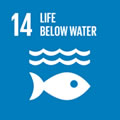Por favor, use este identificador para citar o enlazar a este item:
http://hdl.handle.net/10261/333938COMPARTIR / EXPORTAR:
 SHARE
BASE SHARE
BASE
|
|
| Visualizar otros formatos: MARC | Dublin Core | RDF | ORE | MODS | METS | DIDL | DATACITE | |

| Título: | Gradients of genetic diversity and differentiation across the distribution range of a Mediterranean coral: Patterns, processes and conservation implications |
Autor: | Ledoux, J. B. CSIC ORCID; Ghanem, Raouia; Horaud, Mathilde; López-Sendino, P. CSIC ORCID ; Romero-Soriano, Valèria; Antunes, Agostinho; Bensoussan, Nathaniel CSIC ORCID; Gómez-Gras, D. CSIC ORCID ; Linares, Cristina CSIC ORCID; Machordom, Annie CSIC ORCID ; Ocaña, Óscar; Templado, José CSIC ORCID; Leblois, Raphael; Ben Souissi, Jamila; Garrabou, Joaquim CSIC ORCID | Fecha de publicación: | 7-jul-2022 | Editor: | Sociedad Ibérica de Ecología | Citación: | 2nd Meeting of the Iberian Ecological Society (2022) | Resumen: | How historical and contemporary evolutionary processes shape the patterns of genetic diversity and differentiation across species’ distribution range remains an open question with strong conservation implications. Negative gradients of neutral genetic diversity from central to peripheral populations were reported in various species, yet, the underlying processes are still a matter of debate. Two non-mutually exclusive hypotheses involving contemporary vs. historical processes are usually considered to explain these negative gradients. Following the “central-peripheral hypothesis”, the genetic diversity should decline from the centre toward the peripheries of a species’ range in response to demo-genetic stochasticity linked to the environmental characteristics of peripheral habitats. On the other hand, the “postglacial range expansion hypothesis” suggests that historical processes such as serial founder events recolonization following the Last Glacial Maximum (LGM 24-18,000 years ago), shape negative genetic gradients from the source to the edge of the expansion range. Focusing on the Mediterranean orange stony coral, Astroides calycularis, we tested these hypotheses. Standing on microsatellite genotyping data from 29 populations distributed across its distribution range, we i) characterized the pattern of neutral genetic diversity; ii) gave insights into the underlying processes; and iii) discussed conservation implications, with emphasis on the Zembra national park (Tunisia). We show that the decrease of genetic diversity (He, Ar(g)) and an increase of genetic differentiation (population-specific FST) from the Centre to the Eastern and Western Peripheries of the distribution range is most likely explained by “the postglacial range expansion hypothesis” rather than the “central-peripheral hypothesis”. The populations from Zembra National Park show the highest genetic diversity reported so far in the species. We argue that enforcement of conservation measures should be considered to protect this genetic diversity pattern, in particular when considering the low effective population size inferred at many sites | Descripción: | 2nd Meeting of the Iberian Ecological Society (SIBECOL), 3-8 July 2022, Aveiro, Portugal | URI: | http://hdl.handle.net/10261/333938 |
| Aparece en las colecciones: | (ICM) Comunicaciones congresos |
Mostrar el registro completo
CORE Recommender
NOTA: Los ítems de Digital.CSIC están protegidos por copyright, con todos los derechos reservados, a menos que se indique lo contrario.


